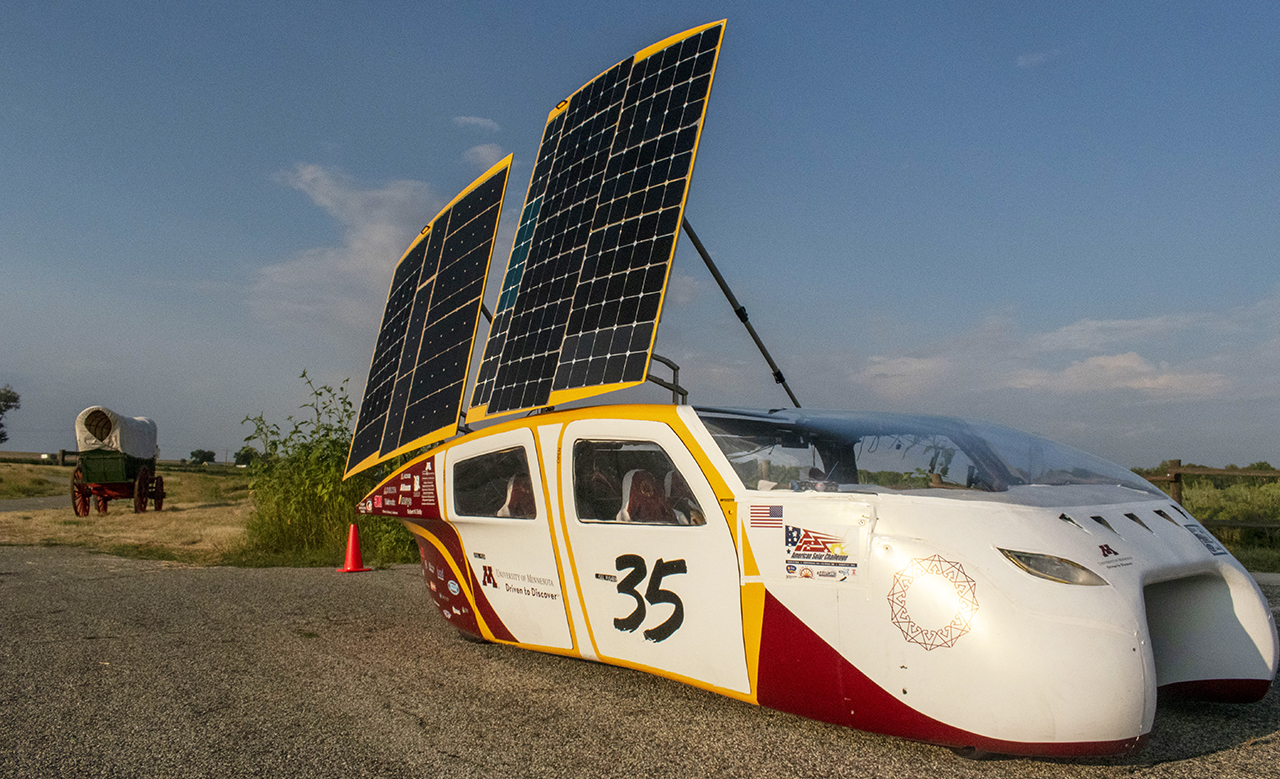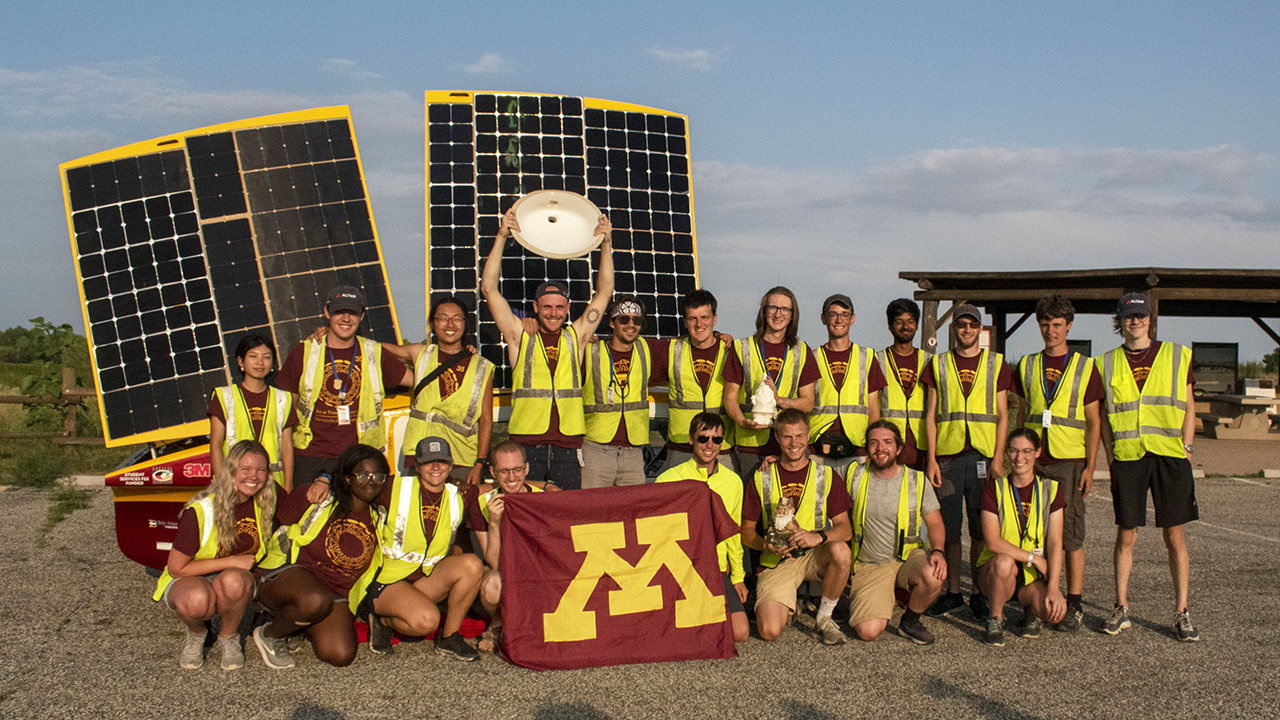.png) Envisioning a post-fossil-fuel transportation world, the University of Minnesota’s student-run Solar Vehicle Project has competed in more than 30 national and global competitions on three continents. Their aim: to refine car designs and rethink how people can travel in an efficient, comfortable, and practical manner using only power derived from its on-board solar panels. Digi XBee® 900 MHz modems help the team track critical data during testing and competitions.
Envisioning a post-fossil-fuel transportation world, the University of Minnesota’s student-run Solar Vehicle Project has competed in more than 30 national and global competitions on three continents. Their aim: to refine car designs and rethink how people can travel in an efficient, comfortable, and practical manner using only power derived from its on-board solar panels. Digi XBee® 900 MHz modems help the team track critical data during testing and competitions.
Fueled by the Sun, Powered by Innovation

The Freya solar vehicle
For more than 30 years, multidisciplinary teams of students from the University of Minnesota have pursued a singular vision: to apply their innovative engineering and continually push forward to make solar-powered automobiles a pragmatic reality.
Under the auspices of the University of Minnesota Solar Vehicle Project (UMNSVP), the students’ efforts are demonstrated annually through interstate and international competitions where colleges line up their vehicles to race hundreds of miles and determine winners in a series of categories and through a variety of metrics. Over the course of several decades, the UMNSVP team has built a strong track record. In the team's history:
- No car has ever failed to qualify for or finish a race
- First or second-place finishes in 19 of 35 events entered
- Eight top-five finishes in international competition
- Raced in five different countries
- Took second place in the American Solar Challenge seven times
- Won the Formula Sun Grand Prix six times
The latest iteration is Freya, UMNSVP’s largest vehicle to date and its first four-seater. This entry competes in the Cruise Class within the American Solar Challenge and Bridgestone World Solar Challenge competitions. According to Jacob Bunzel, a senior studying computer engineering, and Alex Bohm, a senior in computer science, this is the 14th vehicle the teams have produced over the past 30 years. “We make ours from scratch,” said Bunzel. “We use a carbon fiber wrapping over a Nomex-based shell, and we use similar materials for the chassis.”

The Freya on the road
“Naturally, our goal is to create something that’s lightweight and shapable so that our engineers mold it into an aerodynamically optimized form,” Bohm said. “We have separate sub-teams of experts in aerodynamics, solar arrays, electrical systems, vehicle dynamics, operations and strategy. And we even have student drivers who are selected based on tryouts, so it’s really a very highly collaborative effort — which makes it a very fun project to be involved with.”
Staying Connected — with Digi XBee

UMNSVP team members at work
One of the keys to the University of Minnesota’s SVP success is the ability to stay connected to the vehicle computers and data and remotely monitor performance in real time. That happens via the team’s integration of the Digi XBee® SX 900 MHz RF module for on-board telemetry.
The Digi XBee SX 900 provides a combination of reliability and redundancy for low-power, mission-critical wireless devices using either the DigiMesh® networking protocol or simple point-to-multipoint mode. With an integrated antenna, RF line-of-sight ranges up to 65 miles, and strong interference blocking, the module is ideal for applications requiring range, data redundancy, and data reliability. And the small Digi XBee surface-mount form factor saves valuable board space.
The Freya’s vehicle bus gathers data from custom modules and sensors, which gets sent via Digi XBee to diagnostic controllers in the lead/pace car. That server parses the data that the team uses to make real-time adjustments to the vehicle as well as create longitudinal studies and trend analyses. “We use the Digi XBee SX module to share our telemetry with our lead/pace car that follows our solar vehicle in real time,” explained Bohm. “We value the simplicity, power consumption, and small size of the XBee SX,” Bohm said. “It’s very reliable, and we don’t need any cell service, which is nice because sometimes the vehicle will travel in and out of coverage areas.”
“We like the ability to make real-time adjustments during the trips — whether it’s test runs or races,” said Bunzel. “We’re tracking everything from number of miles, charge-per-mile and travel speeds to battery levels. We’re sending hundreds of messages per second to our diagnostic computer that’s traveling along with the Freya.
Making Tracks to the Winner’s Circle

One of several UMNSVP teams, with the Freya
The Freya — which can reach speeds of more than 65 mph and travel as far as 400 miles on a single charge — has continued the UMNSVP tradition, racking up impressive wins in 2021. The vehicle took top honors as the No. 1 multi-occupant vehicle at the 2021 Formula Sun Grand Prix (at Heartland Motorsports Park in Topeka, Kansas). At the 2021 American Solar Challenge (from Independence, Missouri to Las Vegas to New Mexico), the Freya took second place in its class and notched the best Practicality Score.
“We’re constantly learning from our data and aiming to improve our reliability with additional modifications,” said Bunzel. “We have 25 people at the races and at least 50 others working on the vehicle back on campus, so this is truly a team effort. We all care about learning, collaboration, and pushing the technology. It’s a really cool experience for us all.”